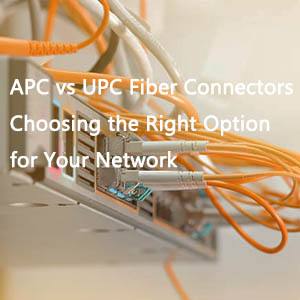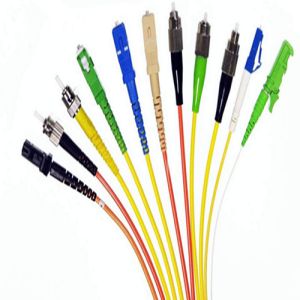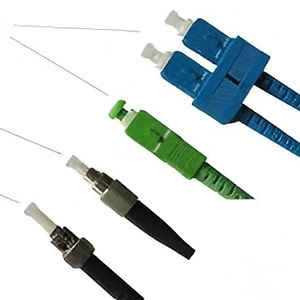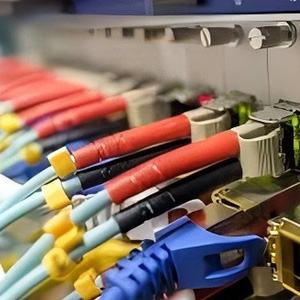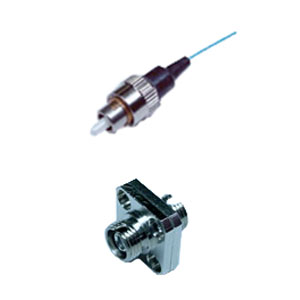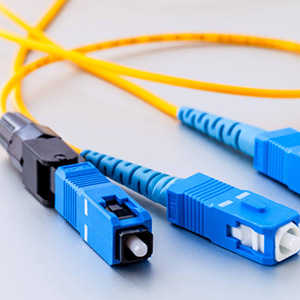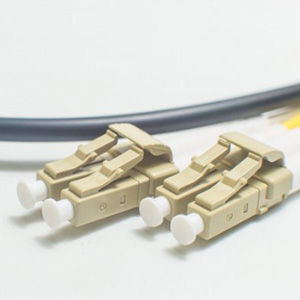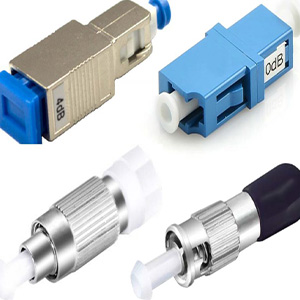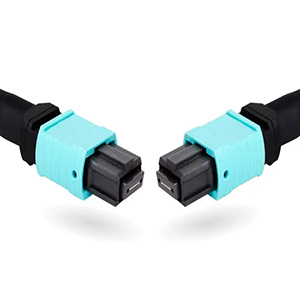The Fiber Attenuators is an important device in the fiber optic communication system, which is specially used to reduce the intensity of the optical signal transmitted through the optical fiber. In some fiber optic networks, the excessive intensity of the optical signal may cause the signal overload of the receiving device, which in turn affects the signal quality or causes data loss.
The Fiber Attenuators absorbs or scatters part of the optical signal, thereby attenuating the signal to a range suitable for reception, ensuring the normal operation of the fiber optic network. Common fiber optic attenuators are fixed and adjustable. The former provides a constant attenuation value, while the latter allows users to manually adjust the attenuation according to their needs. This article will introduce in detail the working principle, application scenarios and importance of the fiber optic attenuator in fiber optic communication.
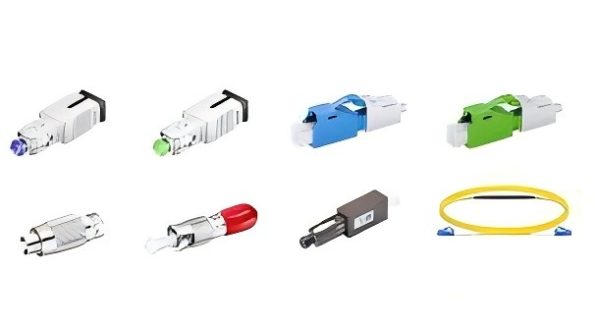
Types of Optical Fiber Attenuators
- Fixed Attenuators: As the name suggests, these attenuators have an unchangeable, fixed attenuation value. They provide precise attenuation levels by uniformly reducing signal power over a specific frequency range.
- Variable Attenuators: Offer greater flexibility as they can be manually adjusted to provide the required attenuation levels. They are commonly used in applications where signal power needs to be frequently altered.
- Serial Attenuators: Designed to be inserted between two optical fibers to reduce the signal strength between them.
- Connector Attenuators: Designed to connect directly to interfaces of devices such as transceivers, available in various forms such as LC, SC, ST, and FC, each designed to fit specific types of fiber optic connectors.
Using Fiber Attenuators in Optical Networks
Effective utilization of optical fiber attenuators is crucial for ensuring optimal performance in optical networks. When signals are too strong for the receiver to interpret correctly, attenuators can be deployed to reduce signal strength to an acceptable level, preventing receiver overload and maintaining signal integrity. Choosing the right type of attenuator is essential, as each has unique advantages. For instance, fixed attenuators are well-suited for networks with constant signal strength, while variable attenuators are ideal for networks with varying signal strength. Serial attenuators are often chosen because they are easy to integrate into existing setups, and connector attenuators are perfect for direct device interface applications. Regular testing and monitoring of the performance of attenuators also help maintain the overall health of the optical network.
How Fiber Attenuators Work
The working mechanism of Fiber Attenuators involves several key
steps:
- Light Absorption: This is the primary mechanism for attenuation. Attenuators absorb a portion of the optical signal to reduce its power.
- Light Reflection: Some attenuators work by reflecting a portion of the optical signal rather than absorbing it, thereby reducing the signal’s power.
- Misalignment: This type of attenuator works by slightly misaligning the fiber core. This misalignment results in a reduction of the amount of light that can pass through, thus reducing signal power.
- Diffusion: Diffusion-based attenuators scatter the optical signal in different directions to reduce its power.
- Distance Attenuation: In some cases, attenuation is achieved by increasing the distance the signal must travel. An increase in travel length results in power loss, thereby reducing signal strength.
Each of these mechanisms has different advantages and can be used in various scenarios. The choice of mechanism depends on the specific requirements of the optical network.
Connector Types and Uses in Fiber Attenuators
Fiber Attenuators are available with a variety of connector types suitable for different network environments. The choice of connector mainly depends on the specific network requirements. Here are some commonly used connector types:
- LC Connectors: Known for their small form factor, these connectors are often used in high-density network environments. Their push-pull design ensures a secure connection, and their compact size allows for easy installation in tight spaces.
- SC Connectors: Renowned for their durability and reliability, typically used in single-mode systems. They feature a strain relief design and are easy to handle due to their larger size.
- ST Connectors: These connectors are mainly used in multimode systems. They provide a secure connection through a bayonet-style locking mechanism.
- FC Connectors: Known for their high precision, ideal for use in high-speed networks. They utilize a screw-type mechanism for a secure connection.
Each connector type has its unique applications and considerations. The choice of connector type is crucial for ensuring the optimal performance of the Fiber Attenuators and the entire optical network.
When to Use Optical Fiber Attenuators?
Factors affecting attenuation in optical systems include:
- Distance: The length of the optical cable significantly affects attenuation. As distance increases, signal strength decreases due to the loss of the optical signal as it propagates through the fiber.
- Wavelength: The wavelength of the optical signal also affects attenuation. Different wavelengths are absorbed and scattered at different rates, leading to varying degrees of signal loss.
- Bending Radius: The physical properties of the optical fiber, including its diameter, numerical aperture, and refractive index, play a crucial role in determining the amount of signal loss. Bending the optical cable beyond its specified minimum bending radius can result in significant signal loss.
- Connectors and Joints: Poorly constructed or damaged connectors can cause loss. Additionally, each joint in the optical cable can result in slight signal loss due to imperfect alignment.
Understanding these factors helps in the effective design and management of optical fiber networks, ensuring optimal performance with minimal attenuation.
Best Scenarios for Using Fixed Attenuators
Fixed attenuators are best suited for situations where a consistent reduction of signal power is needed within a specific range. This is particularly important in testing environments where a known, stable attenuation level is crucial for accurate results. Fixed attenuators are also the best choice for telecommunications systems dealing with high-power optical signals, where excess power could damage receiving equipment. Moreover, they are an excellent choice for network balancing, as network balancing requires equalizing power levels across different paths within the optical network. By understanding these best scenarios, network designers and technicians can ensure that the optical system operates efficiently with minimal signal loss.
Applications of Variable Attenuators
Variable attenuators are widely used in various applications due to their ability to precisely control the power level of optical signals in fiber optic networks. Here are some key areas where they are employed:
- Laboratory Testing and Experiments: Variable attenuators are invaluable in experimental setups where signal strength needs to be adjusted to test the performance of optical devices under different signal strengths.
- Telecommunications Systems: They are crucial for adjusting the signal strength of long-haul telecommunications lines, helping to prevent signal overload and potential damage to receiving equipment.
- Network Tuning: Variable attenuators are used to fine-tune the network by controlling power levels in different channels, thereby optimizing overall network performance.
- Instrument Calibration: They are used to calibrate optical power meters and other similar devices, ensuring their accuracy and effectiveness.
Understanding these applications gives us a deeper insight into the vital role variable attenuators play in the functionality of fiber optic networks.
How Do Fiber Attenuators Work?
Understanding attenuation and its significance
Attenuation in optical fibers refers to the reduction in signal strength as an optical pulse travels through an optical cable. The importance of attenuation in fiber optic systems can be divided into several key factors:
- Signal Quality: High attenuation reduces signal quality, leading to reduced transmission rates and data loss. Therefore, managing attenuation levels is crucial for maintaining signal quality in fiber optic transmission systems.
- Long-Distance Transmission: Attenuation plays a vital role in long-distance transmission. Higher attenuation means more frequent signal amplification is required, which increases costs and complexity.
- Safety: Excessive power levels can damage receivers or other system components. Attenuation helps control these power levels, protecting the integrity of system components.
- System Performance: Balancing attenuation levels is crucial for optimizing system performance. Too much attenuation can lead to signal loss, while too little can cause overload and damage.
- Cost-Effectiveness: By ensuring the correct signal power levels, attenuators can extend the lifespan and reliability of network components, reduce maintenance and replacement costs, and improve overall network cost efficiency.
In general, Fiber Attenuators play a key role in fiber optic communication systems, especially in short-distance, high-power transmission scenarios, where they can effectively adjust the intensity of optical signals and avoid network failures caused by signal overload. By properly selecting and using Fiber Attenuators, network engineers can ensure the stability and reliability of fiber optic transmission.
In future network deployments, as fiber optic technology develops and its applications continue to expand, Fiber Attenuators will continue to be an important tool for ensuring network performance. If you are considering optimizing your fiber optic network, understanding and properly using Fiber Attenuators will greatly help improve the overall performance of the system.


